
Leader: Rob Randall
The coach trip to Kenfig was made in the rain but on approaching our destination the weather brightened. After disembarking the party made for Kenfig Pool, the large lagoon at the rear of the dunes. Bathing dogs kept most water-fowl, including Little Egret and Great Crested Grebe, at a distance but a Cormorant posed for pictures on a pole in front of the hide. The pool is surrounded by scrub where warblers were very active, including Willow and Sedge Warbler, Chiff-chaff and Whitethroat. Leaving the pool the party headed for an area of dune slacks, grassy fenland in between the dunes. These were famous for their orchids and although the Early and Southern Marsh Orchids were mostly over, the Marsh Helleborine was in full flower.
The open scrub on the dunes was home to Linnet and Stonechat. In many places there was dwarf scrub comprising Burnet Rose, then in fruit, and Creeping Willow, and everywhere the latter grew there were large numbers of the Red Poplar Leaf-beetle, whose larvae feed on a variety of willow and poplar species. Other beetles included the very brightly coloured Sulphur Beetle and the Bee Beetle, a kind of chafer.
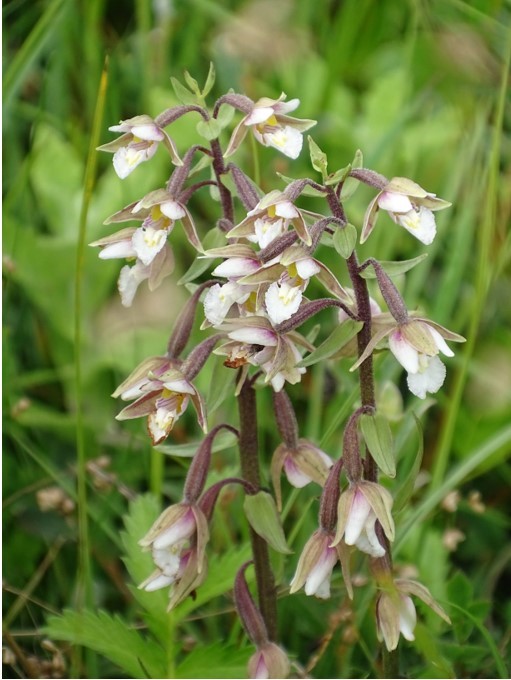
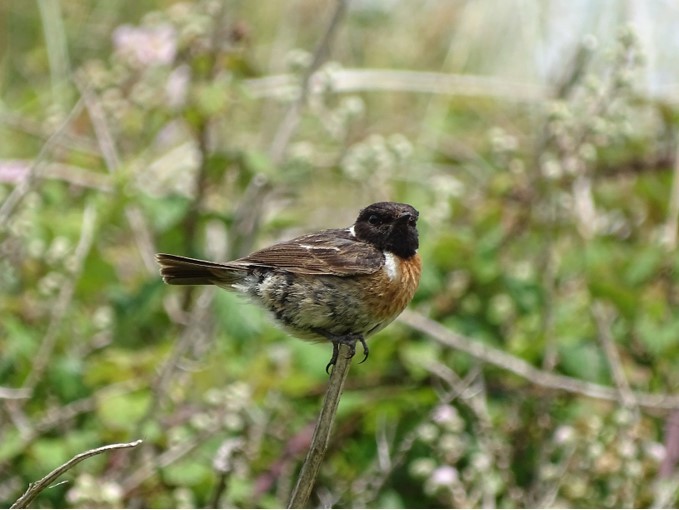
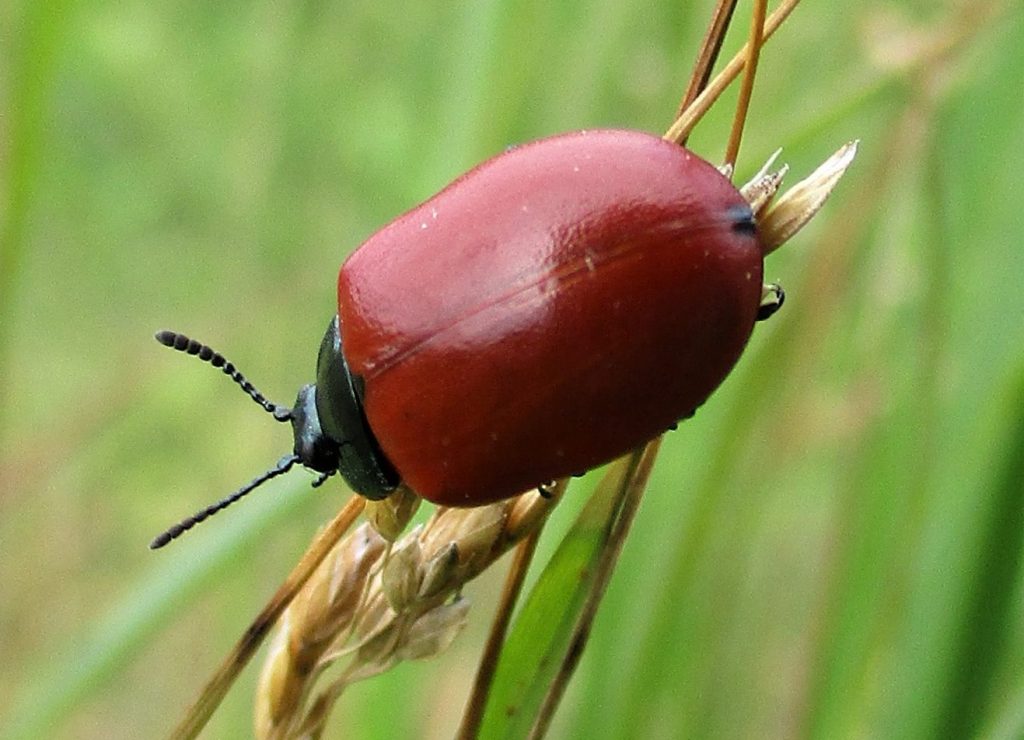
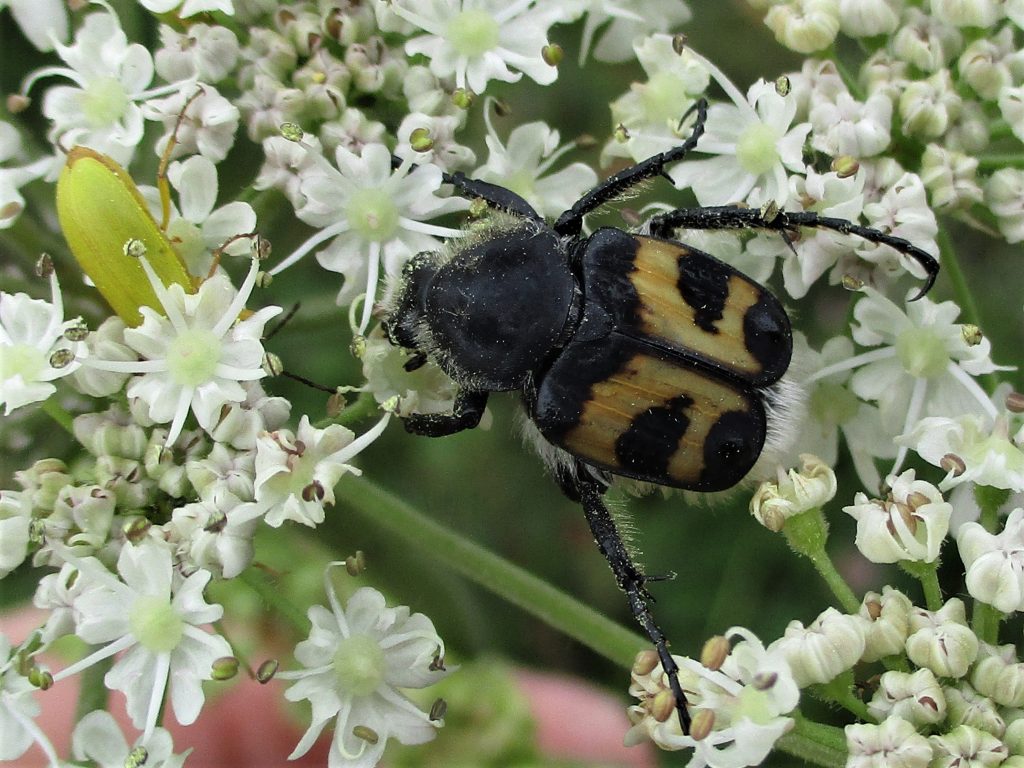
Reed Bunting, Meadow Pipit and Skylark were associated with the more open areas and Dark Green Fritillaries were quite frequent as were Skippers, including Essex Skipper. One specimen of Small Blue was seen along with many Common Blues. A colourful Deerfly seemed to be attracted to Shona Tudor’s blue hat.
At one point the party split into two, with the birdwatchers heading for a spot where a Grasshopper Warbler had been heard on a recce a few days earlier, while the others hunted for the rare Fen Orchid. The warbler was still singing and was glimpsed from afar but the orchid eluded the botanists. The two parties rendezvoused on the coast where the sparse vegetation on the strandline included Sea Spurge, Rock Samphire, Sea Holly and the rare Sea Stock.
On the way back Anne Crowe was lucky enough to spot and catch a Fenland Pearl (Anania perlucidalis).
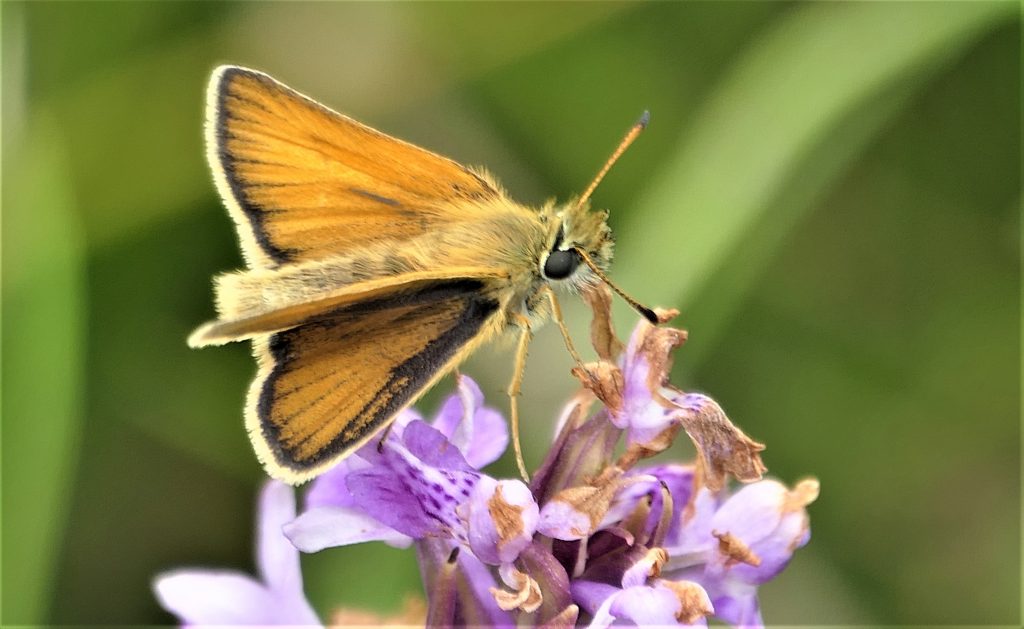
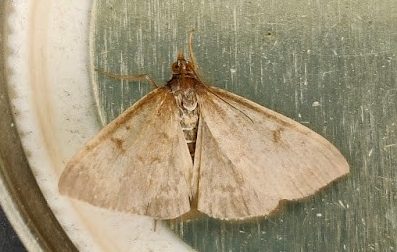
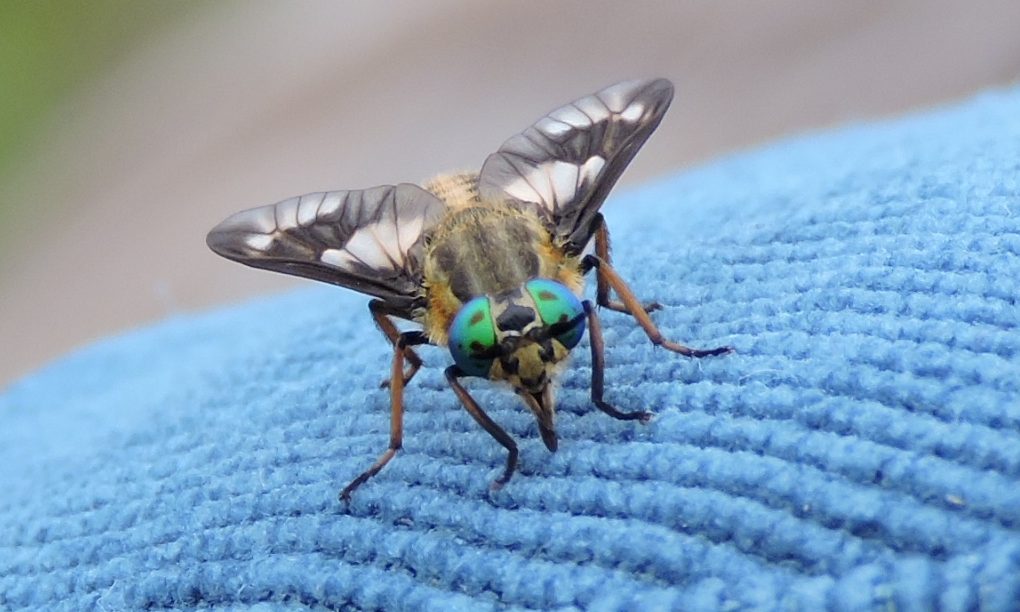

Recent Comments